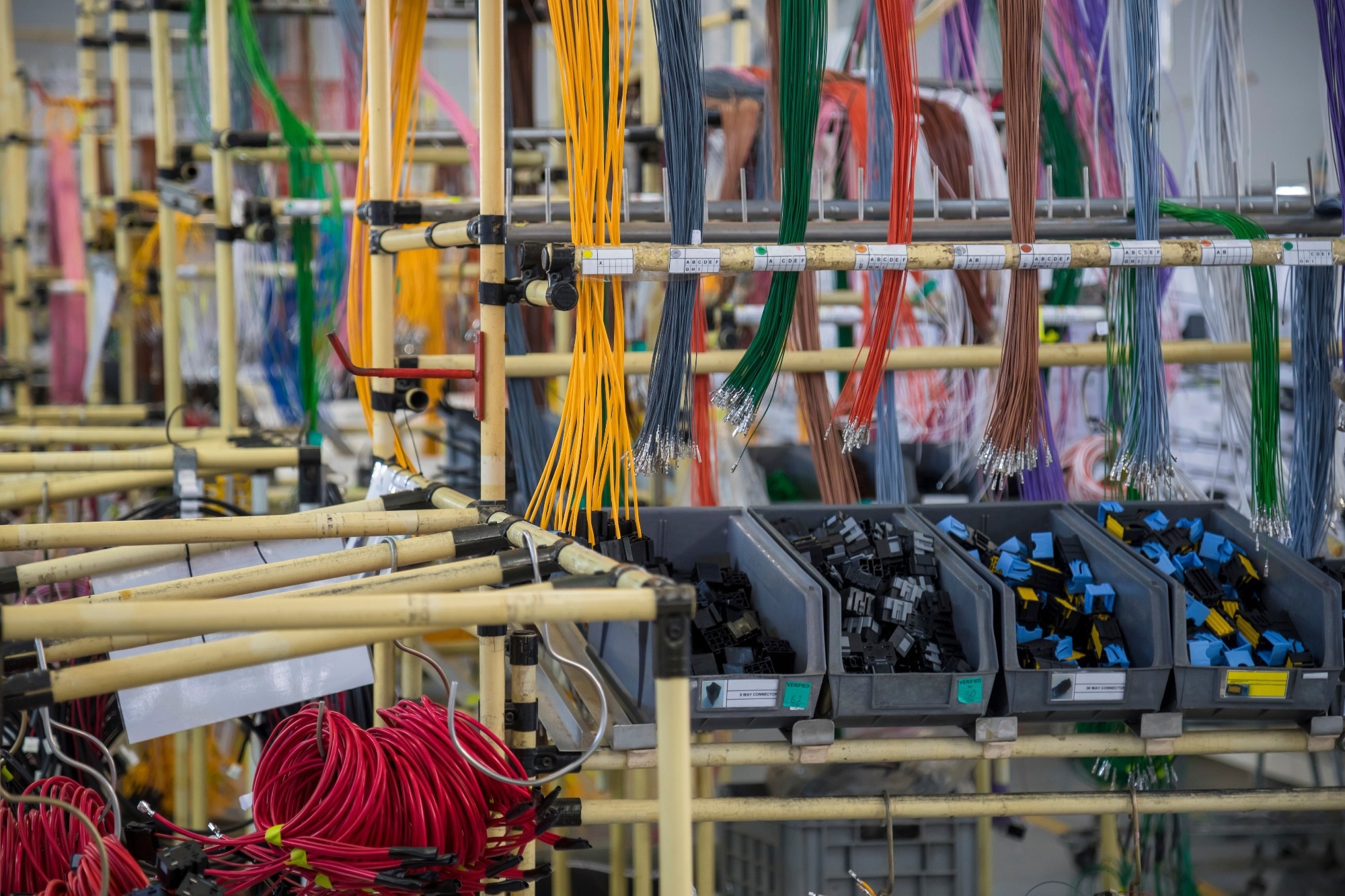In a paper published in the journal Mathematics, researchers proposed a novel fault detection system for wiring harness manufacturing. The system utilized an AI classification model to improve quality control while overcoming material variability and operator dependency challenges.
 Study: AI-driven Fault Detection to Enhance Quality Control in Wiring Harness Manufacturing. Image credit: Lucian Coman/Shutterstock
Study: AI-driven Fault Detection to Enhance Quality Control in Wiring Harness Manufacturing. Image credit: Lucian Coman/Shutterstock
Initially, researchers faced a scarcity of labeled data, so they trained the model on a small set of manually extracted average data from each production run. Researchers employed regional selective data scaling (RSDS) to generate synthetic abnormal data, facilitating efficient model training solely on average operation data to augment this limited data.
Related Work
Past work has extensively explored fault detection systems as vital components in maintaining manufacturing process quality. Among these, crimp force monitoring (CFM) in wiring harness manufacturing has been prominent, analyzing crimp quality through peak pressure data comparison. However, CFM presents challenges such as costly equipment and limited scalability. While anomaly detection algorithms like isolation forest offer a solution by training solely on average data, their limited performance may only ensure sufficient detection accuracy for some potential faults, limiting their applicability in manufacturing quality control practices.
Innovative Fault Detection
The proposed methodology addresses challenges in fault detection within manufacturing systems through an innovative integration of various techniques. While effective, traditional supervised learning often requires extensive labeled data, which can be costly and time-consuming. On the other hand, unsupervised learning processes unlabeled data but struggles to detect unpredictable defects. Semi-supervised learning attempts to bridge this gap but needs to be improved by the need for more abnormal data. The proposed approach introduces AI coupled with RSDS to tackle these limitations to generate synthetic abnormal data, augmenting the training dataset and enhancing the fault detection system's performance.
Raw data acquisition is fundamental to the proposed methodology, with data collected from a wire harness crimping machine operating in a real-world industrial setting. The CFM system, equipped with a piezoelectric sensor, facilitates this data collection process, yielding a comprehensive dataset spanning multiple days of production. However, statistical analysis reveals significant variations in dataset scales, posing a challenge for developing a generalized AI model suitable for fault detection across diverse manufacturing conditions.
The proposed fault detection system represents a paradigm shift in manufacturing quality control, leveraging AI with RSDS to overcome the limitations of traditional methods. RSDS selectively applies scaling to different dataset regions, simulating various defect scenarios and enriching the model's learning spectrum. An AI model, specifically a multilayer perceptron (MLP), is employed due to its adaptability to diverse data patterns and adjustable complexity.
Furthermore, data augmentation techniques using noise from the Laplace distribution enhance the training dataset's quantity, quality, and diversity, facilitating more sophisticated learning mechanisms and improving the fault detection system's robustness. The proposed methodology offers a promising solution to the challenges faced in fault detection within manufacturing systems. By integrating AI with RSDS and employing advanced data augmentation techniques, the system enhances the efficiency and accuracy of fault detection processes. This innovative approach addresses the limitations of traditional fault detection methods and lays the groundwork for more effective quality control in manufacturing operations.
Validation and Analysis Summary
The fault detection system's validation involved testing 15 datasets from real-world wiring harness crimping manufacturing processes collected over a specific timeframe. The CFM system facilitated the labeling process for 24,249 entries, classifying 24,152 as "Good" and 97 as "Bad." Although the AI model's findings were not directly compared to CFM results, the annotated CFM data proved valuable for testing. The experiments were conducted sequentially, with synthetic abnormal data generated from reference data, forming the basis for establishing an AI model.
Utilizing Python and the MLPclassifier library, researchers expanded the 10 reference datasets to 700 using augmentation techniques. Researchers trained an MLP model with 200 input neurons and two hidden layers using 770 labeled datasets. The comparative analysis involved four anomaly detection algorithms, with the proposed system demonstrating exceptional accuracy (99.95%) and a high True-Negative Rate (85.72%). While other algorithms showed varying accuracies, the proposed system's performance indicated its effectiveness in fault detection.
Visualized prediction results showcased accurate classification of defects, enabled by AI calibration with ten standard samples. However, analysis revealed false positives, possibly due to inadequate differentiation between synthetic and authentic data. Enhancing the fault detection system's accuracy in future research involves refining the RSDS process, exploring advanced methodologies, comparing model performance with CFM, and integrating continual learning mechanisms.
Conclusion
In summary, the study proposed a method to enhance quality control in wiring harness crimping manufacturing by combining RSDS with AI. Generating synthetic abnormal data addressed the challenge of limited labeled datasets. Experimentation on industrial data showcased its promise over traditional methods. Its practical application offered significant benefits in natural production settings. While further exploration was needed, this approach showed potential for improving manufacturing quality control, albeit with limitations in broader contexts. Future research could refine scalability and compatibility with emerging AI techniques.